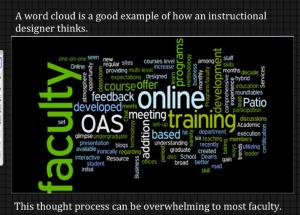In this image taken from a video, an undated family photo provided by Patimat Suleimanova, the aunt of USA Boston bomb suspects, shows Anzor Tsarnaev left, Zubeidat Tsarnaev holding Tamerlan Tsarnaev and Anzor's brother Mukhammad Tsarnaev. Now known as the angry and grieving mother of the Boston Marathon bombing suspects, Zubeidat Tsarnaev is drawing increased attention after federal officials say Russian authorities intercepted her phone calls, including one in which she vaguely discussed jihad with her elder son. In another, she was recorded talking to someone in southern Russia who is under FBI investigation in an unrelated case, U.S. officials said. (AP Photo/Patimat Suleimanova)
In this image taken from a video, an undated family photo provided by Patimat Suleimanova, the aunt of USA Boston bomb suspects, shows Anzor Tsarnaev left, Zubeidat Tsarnaev holding Tamerlan Tsarnaev and Anzor's brother Mukhammad Tsarnaev. Now known as the angry and grieving mother of the Boston Marathon bombing suspects, Zubeidat Tsarnaev is drawing increased attention after federal officials say Russian authorities intercepted her phone calls, including one in which she vaguely discussed jihad with her elder son. In another, she was recorded talking to someone in southern Russia who is under FBI investigation in an unrelated case, U.S. officials said. (AP Photo/Patimat Suleimanova)
FILE - This April 25, 2013 file photo shows the mother of the two Boston bombing suspects, Zubeidat Tsarnaeva, left, speaking at a news conference in Makhachkala, the southern Russian province of Dagestan. Two government officials tell The Associated Press that U.S. intelligence agencies added the Boston bombing suspects' mother to a federal terrorism database about 18 months before the attack. At right is her sister-in-law Maryam. (AP Photo/Musa Sadulayev, File)
BOSTON (AP) ? In photos of her as a younger woman, Zubeidat Tsarnaeva wears a low-cut blouse and has her hair teased like a 1980s rock star. After she arrived in the U.S. from Russia in 2002, she went to beauty school and did facials at a suburban day spa.
But in recent years, people noticed a change. She began wearing a hijab and cited conspiracy theories about 9/11 being a plot against Muslims.
Now known as the angry and grieving mother of the Boston Marathon bombing suspects, Tsarnaeva is drawing increased attention after federal officials say Russian authorities intercepted her phone calls, including one in which she vaguely discussed jihad with her elder son. In another, she was recorded talking to someone in southern Russia who is under FBI investigation in an unrelated case, U.S. officials said.
Tsarnaeva insists there is no mystery. She's no terrorist, just someone who found a deeper spirituality. She insists her sons ? Tamerlan, who was killed in a gunfight with police, and Dzhokhar, who was wounded and captured ? are innocent.
"It's all lies and hypocrisy," she told The Associated Press in Dagestan. "I'm sick and tired of all this nonsense that they make up about me and my children. People know me as a regular person, and I've never been mixed up in any criminal intentions, especially any linked to terrorism."
Amid the scrutiny, Tsarnaeva and her ex-husband, Anzor Tsarnaev, say they have put off the idea of any trip to the U.S. to reclaim their elder son's body or try to visit Dzhokhar in jail. Tsarnaev told the AP on Sunday he was too ill to travel to the U.S. Tsarnaeva faces a 2012 shoplifting charge in a Boston suburb, though it was unclear whether that was a deterrent.
At a news conference in Dagestan with Anzor last week, Tsarnaeva appeared overwhelmed with grief one moment, defiant the next. "They already are talking about that we are terrorists, I am terrorist," she said. "They already want me, him and all of us to look (like) terrorists."
Tsarnaeva arrived in the U.S. in 2002, settling in a working-class section of Cambridge, Mass. With four children, Anzor and Zubeidat qualified for food stamps and were on and off public assistance benefits for years. The large family squeezed itself into a third-floor apartment.
Zubeidat took classes at the Catherine Hinds Institute of Esthetics, before becoming a state-licensed aesthetician. Anzor, who had studied law, fixed cars.
By some accounts, the family was tolerant.
Bethany Smith, a New Yorker who befriended Zubeidat's two daughters, said in an interview with Newsday that when she stayed with the family for a month in 2008 while she looked at colleges, she was welcomed even though she was Christian and had tattoos.
"I had nothing but love over there. They accepted me for who I was," Smith told the newspaper. "Their mother, Zubeidat, she considered me to be a part of the family. She called me her third daughter."
Zubeidat said she and Tamerlan began to turn more deeply into their Muslim faith about five years ago after being influenced by a family friend, named "Misha." The man, whose full name she didn't reveal, impressed her with a religious devotion that was far greater than her own, even though he was an ethnic Armenian who converted to Islam.
"I wasn't praying until he prayed in our house, so I just got really ashamed that I am not praying, being a Muslim, being born Muslim. I am not praying. Misha, who converted, was praying," she said.
By then, she had left her job at the day spa and was giving facials in her apartment. One client, Alyssa Kilzer, noticed the change when Tsarnaeva put on a head scarf before leaving the apartment.
"She had never worn a hijab while working at the spa previously, or inside the house, and I was really surprised," Kilzer wrote in a post on her blog. "She started to refuse to see boys that had gone through puberty, as she had consulted a religious figure and he had told her it was sacrilegious. She was often fasting."
Kilzer wrote that Tsarnaeva was a loving and supportive mother, and she felt sympathy for her plight after the April 15 bombings. But she stopped visiting the family's home for spa treatments in late 2011 or early 2012 when, during one session, she "started quoting a conspiracy theory, telling me that she thought 9/11 was purposefully created by the American government to make America hate Muslims."
"It's real," Tsarnaeva said, according to Kilzer. "My son knows all about it. You can read on the Internet."
In the spring of 2010, Zubeidat's eldest son got married in a ceremony at a Boston mosque that no one in the family had previously attended. Tamerlan and his wife, Katherine Russell, a Rhode Island native and convert from Christianity, now have a child who is about 3 years old.
Zubeidat married into a Chechen family but was an outsider. She is an Avar, from one of the dozens of ethnic groups in Dagestan. Her native village is now a hotbed of an ultraconservative strain of Islam known as Salafism or Wahabbism.
It is unclear whether religious differences fueled tension in their family. Anzor and Zubeidat divorced in 2011.
About the same time, there was a brief FBI investigation into Tamerlan Tsarnaev, prompted by a tip from Russia's security service.
The vague warning from the Russians was that Tamerlan, an amateur boxer in the U.S., was a follower of radical Islam who had changed drastically since 2010. That led the FBI to interview Tamerlan at the family's home in Cambridge. Officials ultimately placed his name, and his mother's name, on various watch lists, but the inquiry was closed in late spring of 2011.
After the bombings, Russian authorities told U.S. investigators they had secretly recorded a phone conversation in which Zubeidat had vaguely discussed jihad with Tamerlan. The Russians also recorded Zubeidat talking to someone in southern Russia who is under FBI investigation in an unrelated case, according to U.S. officials who spoke on condition of anonymity because they were not authorized to discuss the investigation with reporters.
The conversations are significant because, had they been revealed earlier, they might have been enough evidence for the FBI to initiate a more thorough investigation of the Tsarnaev family.
Anzor's brother, Ruslan Tsarni, told the AP from his home in Maryland that he believed his former sister-in-law had a "big-time influence" on her older son's growing embrace of his Muslim faith and decision to quit boxing and school.
While Tamerlan was living in Russia for six months in 2012, Zubeidat, who had remained in the U.S., was arrested at a shopping mall in the suburb of Natick, Mass., and accused of trying to shoplift $1,624 worth of women's clothing from a department store.
She failed to appear in court to answer the charges that fall, and instead left the country.
___
Seddon reported from Makhachkala, Russia. Associated Press writers Eileen Sullivan and Matt Apuzzo contributed to this report from Washington.
Associated PressSource: http://hosted2.ap.org/APDEFAULT/386c25518f464186bf7a2ac026580ce7/Article_2013-04-28-Boston%20Marathon-Suspects'%20Mother/id-2828699e2d4240a797ddb521530b55d4
brandon inge freedom tower freedom tower eric church quick silver where have you been rihanna world trade center
 By Stefanie Panke
By Stefanie Panke








